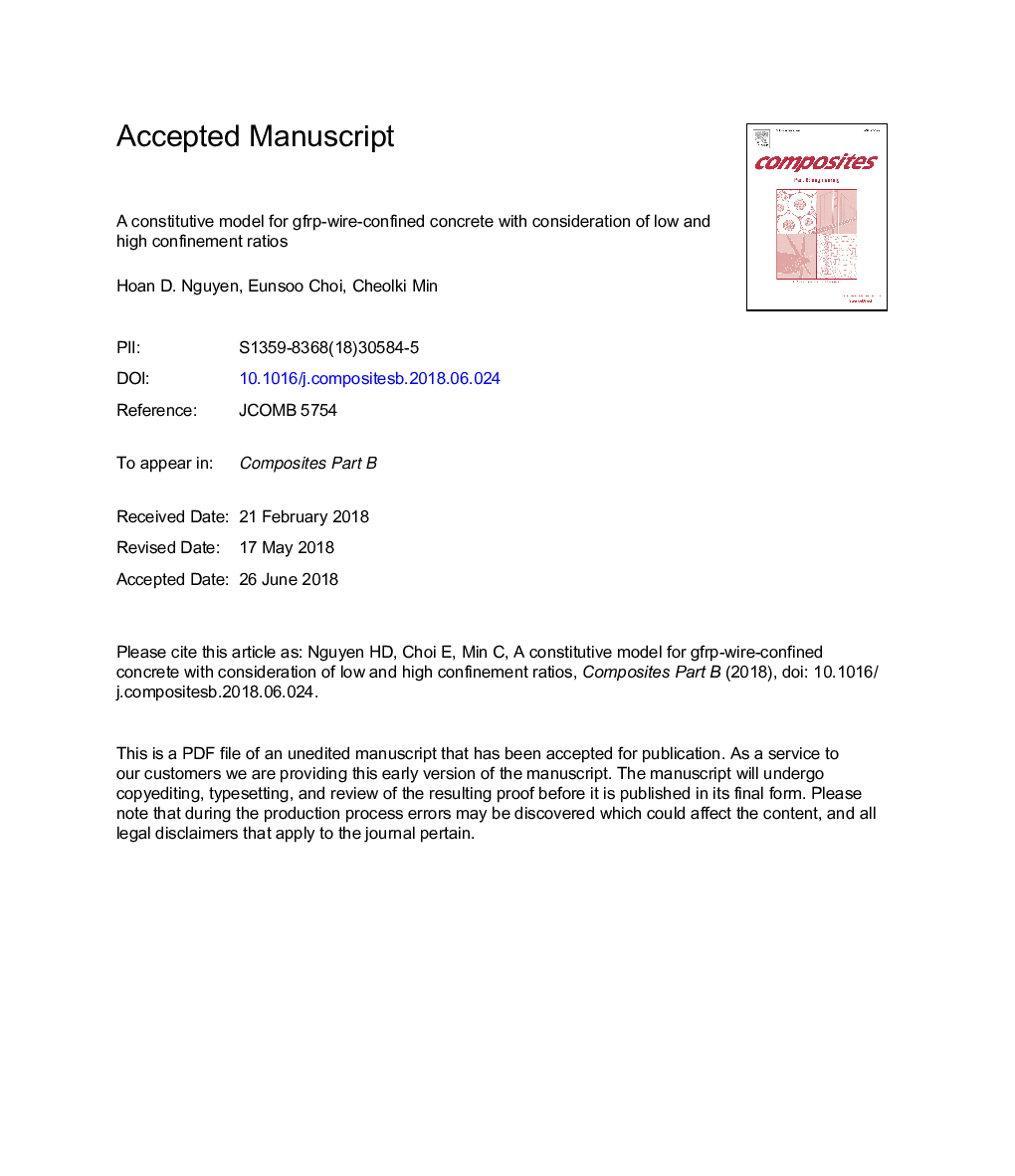| Article ID | Journal | Published Year | Pages | File Type |
|---|---|---|---|---|
| 7211783 | Composites Part B: Engineering | 2018 | 32 Pages |
Abstract
Fiber-reinforced polymer (FRP) wire has been applied to confine concrete through a device that controls the confining pressure during installation. Thus, the tightness of jackets is controlled. Experiments conducted on FRP-wire-confined concrete in previous studies have shown that the method provides better confinement effects on concrete than the use of FRP sheets. Despite numerous experimental studies, there are few models available that can predict the stress-strain relation of FRP-wire-confined concrete. This study utilized test results from experiments reported in the literature, which were conducted on 36 specimens with various amounts of FRP wire and various strengths of concrete. Based on those results, an empirical model that is able to predict the stress-strain behavior of FRP-wire-confined concrete is proposed. Note that this study considers both low and high confinement ratios. New peak-stress and peak-strain equations are derived and validated based on the experimental results. The limit values between low, and high confinement cases are also presented. The proposed model achieves acceptable result in comparison to experimental results and a literature model.
Related Topics
Physical Sciences and Engineering
Engineering
Engineering (General)
Authors
Hoan D. Nguyen, Eunsoo Choi, Cheolki Min,
